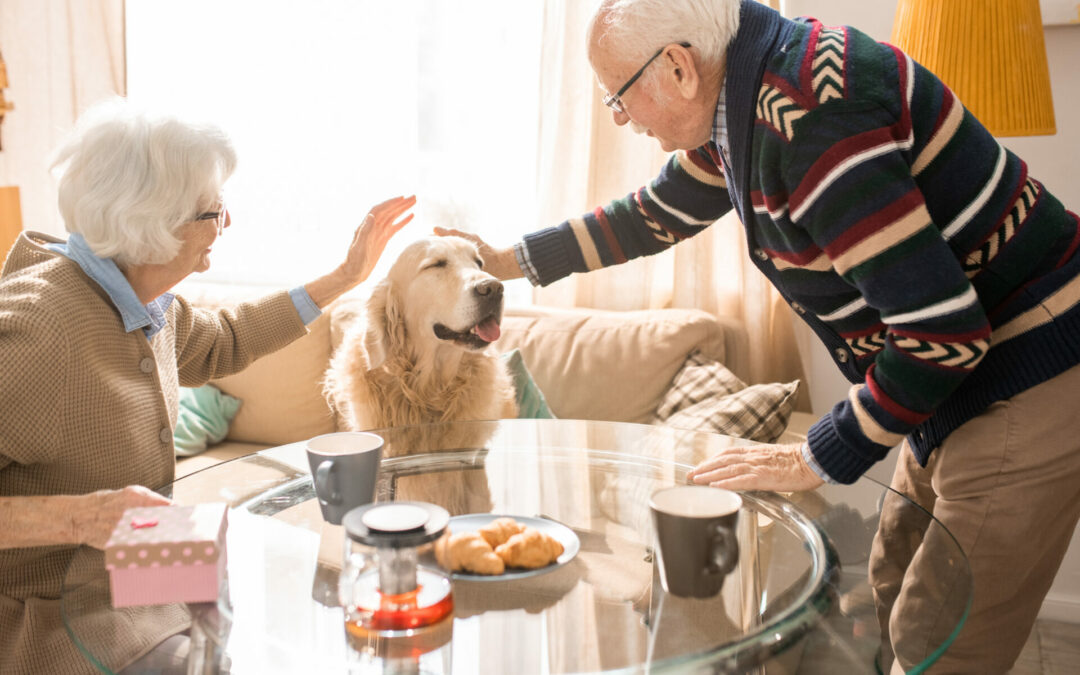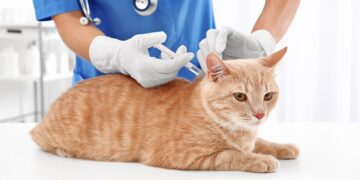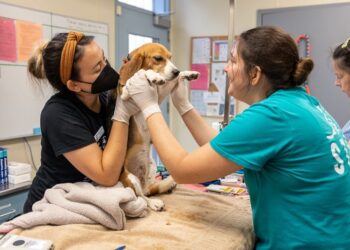The journey of watching a beloved companion transition into their senior years is a tender, inevitable phase of pet ownership, requiring a profound shift in care from preventative maintenance to supportive, specialized comfort.
Unlike the robust, high-energy demands of youth, aging brings subtle, gradual changes—a stiffness in the morning, a reluctance to jump onto the sofa, or perhaps a slight cloudiness in the eyes—that signal a fundamental change in their physical and mental resilience.
Recognizing the specific vulnerabilities of a senior pet, who often silently cope with multiple concurrent issues like hidden dental pain, developing arthritis, and early cognitive decline, is the defining measure of devoted care.
By adjusting the home environment, tailoring their nutrition, and escalating veterinary oversight, you don’t just prolong their life; you actively maximize their comfort and preserve their dignity, ensuring their final chapters are filled with security, predictability, and unwavering love.
This comprehensive guide will illuminate the crucial adjustments necessary to help your dog or cat age gracefully and happily.
Escalating Veterinary and Health Oversight

As pets age, the timeline for potential disease progression accelerates, making biannual veterinary visits a non-negotiable standard of care.
A. The Biannual Wellness Exam
- A. Senior pets (generally dogs over 7 and large dogs over 5) should receive a complete physical examination every six months.
- B. These frequent exams allow veterinarians to detect subtle, early signs of age-related illnesses, such as kidney disease, heart murmurs, or diabetes, long before they become clinical crises.
- C. Senior exams typically include more in-depth diagnostics, such as bloodwork, a urinalysis, and often a thyroid panel, to establish baseline organ function and catch internal changes.
- D. Early detection often translates directly into more effective, less invasive treatment options, improving both the quality and duration of your pet’s life.
B. Managing Chronic Conditions
- A. Arthritis and Joint Pain are nearly universal in aging pets, manifesting as stiffness, reluctance to jump, or difficulty rising after rest.
- B. Management involves a multimodal approach combining prescription anti-inflammatory drugs (NSAIDs), joint supplements like glucosamine and chondroitin, and therapeutic laser or acupuncture sessions.
- C. Dental Disease becomes more prevalent and severe, often requiring professional cleaning under anesthesia and extraction of painful, infected teeth that can shower bacteria into the bloodstream.
- D. Other common chronic conditions like Kidney Disease, Heart Disease, and Diabetes require strict dietary management and specialized medications as directed by your veterinary team.
- E. Recognizing that senior pets are masters at hiding pain means owners must be vigilant for subtle behavioral clues like irritability, excessive licking of a single joint, or reluctance to interact.
Tailoring Nutrition and Hydration
A senior pet’s slowing metabolism and increased risk of organ disease necessitate a strategic overhaul of their daily diet.
A. Protein and Calorie Adjustment
- A. Senior pets often experience muscle wasting (sarcopenia), making high-quality, highly digestible proteinessential to preserve lean body mass.
- B. Contrary to outdated advice, most healthy senior pets need more protein, not less, to fight muscle loss, unless a vet specifically restricts it due to advanced kidney disease.
- C. Because senior pets are generally less active, their caloric needs decrease, making weight management crucial to avoid obesity, which severely exacerbates arthritis.
- D. Choose senior-specific diets that are formulated to be slightly lower in fat and calories but higher in necessary fiber and protein density.
- E. Senior diets are typically adjusted to be lower in phosphorus to protect aging kidneys, a common age-related concern.
B. Essential Supplements
- A. Omega-3 Fatty Acids (EPA and DHA, usually from fish oil) are the most important anti-inflammatory supplements, crucial for soothing painful joints and supporting brain health.
- B. Supplements containing Glucosamine and Chondroitin Sulfate provide the building blocks necessary to maintain cartilage health and joint lubrication.
- C. Added Antioxidants (like Vitamin E and C) help combat oxidative stress and cellular damage associated with aging and cognitive decline.
- D. Discuss any supplement regimen with your vet, ensuring proper dosage and avoiding potentially harmful interactions with prescribed medications.
C. Encouraging Hydration
- A. Older pets are at a higher risk of dehydration due to reduced thirst drive and decreased kidney concentrating ability.
- B. Always ensure fresh, clean water is available in multiple, easily accessible locations around the home.
- C. Switching from dry kibble to wet food is an excellent strategy, as it drastically increases the pet’s daily fluid intake.
- D. Consider pet water fountains, as some senior pets, particularly cats, are stimulated to drink more by running water.
Enhancing Mobility and Safety at Home

Age-related weakness and confusion can turn a familiar home environment into a hazardous obstacle course, requiring strategic modification.
A. Optimizing Flooring and Traction
- A. Slick floors (hardwood, tile) are extremely dangerous for senior pets with weak legs or arthritis, leading to painful slips and falls.
- B. Strategically place non-slip rugs, carpet runners, or yoga mats in high-traffic areas, hallways, and especially near beds and food bowls.
- C. For dogs needing extra grip, non-slip products like toe grips or specialized paw wax can provide crucial traction and increase confidence.
- D. Use support slings or harnesses with handles to assist large dogs when navigating short distances, rising from rest, or going up a single step, preventing injury to both pet and owner.
B. Ramps and Accessible Resting Spots
- A. Install sturdy pet ramps or shallow stairs to provide safe access to the car, outdoor decks, or furniture (like the sofa or bed) the pet can no longer jump onto.
- B. Elevated food and water bowls can relieve strain on the neck and joints for large dogs or those with spinal issues.
- C. Ensure sleeping areas are warm, soft, and easy to step into, such as orthopedic or memory foam beds that cushion sore joints and prevent pressure sores.
- D. If the pet has vision impairment, avoid rearranging furniture and use scent cues or textured mats to mark doorways and food locations.
C. Litter Box and Potty Modifications (Felines)
- A. For senior cats with arthritis, use litter boxes with low sides or cut-down entrances to eliminate the painful struggle of stepping over high edges.
- B. Place multiple litter boxes on every level of the house to ensure the cat never has to travel far, especially if they have urgency or reduced bladder control.
- C. Ensure the litter box contains an ample amount of soft, comfortable litter that is easy on arthritic paws.
Recognizing Pain and Cognitive Decline
Mental and emotional changes are often the hardest for owners to spot, but they significantly impact quality of life.
A. Identifying Pain (Beyond Limping)
- A. Pain in senior pets is often exhibited through subtle behavioral changes rather than obvious vocalization.
- B. Look for reluctance to move, decreased interest in play, excessive licking or chewing of a single joint, or increased irritability when touched.
- C. Cats often display pain by avoiding high perches they once loved, withdrawing, or becoming aggressive when handled.
- D. Increased panting (when not hot or exercising) or restlessness, especially at night, can be a sign that the pet is struggling to get comfortable.
- E. Promptly addressing pain, which is often chronic, is paramount for improving a senior pet’s mood and desire to interact.
B. Cognitive Dysfunction Syndrome (CDS)
- A. CDS, often compared to dementia in humans, involves progressive memory loss and changes in thought processes.
- B. The most common signs are summarized by the acronym DISHA (Disorientation, Interaction changes, Sleep-wake cycle disturbances, House soiling, and Activity changes).
- C. Disorientation includes getting stuck behind furniture, staring blankly at walls, or failing to find the correct side of the door.
- D. Sleep-wake cycle disturbances mean the pet is restless and paces or vocalizes excessively at night but sleeps excessively during the day.
- E. Management involves veterinary prescription drugs, antioxidant-rich diets, and simple daily mental stimulation(easy puzzle games) to maintain cognitive function.
Conclusion
Caring for a senior pet is an extraordinary act of sustained devotion, moving beyond basic needs to actively manage the inevitable physical and mental complexities of aging.
It necessitates a critical shift to biannual veterinary exams and proactive diagnostic testing, ensuring that developing conditions like kidney disease or diabetes are detected and managed early.
The nutritional framework must be carefully adjusted, prioritizing high-quality protein to combat muscle loss while managing calories to prevent the dangerous, arthritis-worsening effects of obesity.
Modifying the home environment with non-slip surfaces, supportive orthopedic beds, and strategically placed ramps is essential for maintaining mobility and preserving the pet’s independence and dignity.
Owners must become vigilant observers, attuned to the subtle, non-vocal signs of chronic pain and the tell-tale behavioral shifts indicative of Cognitive Dysfunction Syndrome.
Successfully navigating the golden years involves a deep commitment to managing pain through multi-modal therapies, thereby transforming a period of potential decline into one of prolonged comfort and peace.
Ultimately, your dedication to adapting their world to their changing needs is the greatest gift, allowing your cherished companion to remain secure, happy, and loved through their final, precious chapters.







